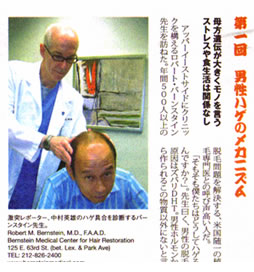Q: I am a patient of yours who had a hair transplantation procedure done mostly in the crown area and in the front about seven months ago. The hair is just starting to come in nicely and is starting to fill in the bald spots. Yesterday I carelessly banged the top of my head against a beam in my attic and cut a nice gash in, you guessed it, a transplanted area. I’d say that the cut is about a good inch. My wife works for a doctor who is certified in facial plastic surgery and I had him suture up the gash. He did not cut any hair, but it took 4 stitches to close the wound. I’m worried about the impact on the transplanted area. Just when it was starting to come in nice I now have a bald spot that I suspect is going to stay as a result of the accident. Please advise. — V.F., Fort Lee, N.J.
A: There is not much you can do at this time. Depending upon the doctor’s suturing techniques; you may or may not have permanent hair loss from the trauma and subsequent suturing. The problem is that if the sutures are placed too far from the wound edge they can strangulate hair follicles, particularly if there is any swelling. Hair loss may be temporary, but if it is permanent, it should be minimal. Additional grafts can be added at your next hair restoration procedure to cover any area of hair loss and the scar from the injury, if it is visible.


 NY Japion — a weekly newspaper in the Japanese language, published in the New York tri-state area, and distributed for free in the Japanese community — has featured Robert M. Bernstein, MD, in their series on hair loss in men and women.
NY Japion — a weekly newspaper in the Japanese language, published in the New York tri-state area, and distributed for free in the Japanese community — has featured Robert M. Bernstein, MD, in their series on hair loss in men and women. 


